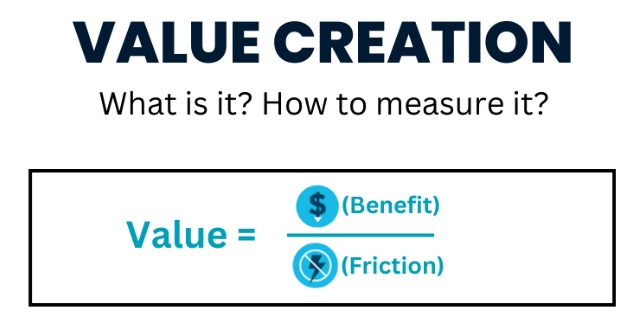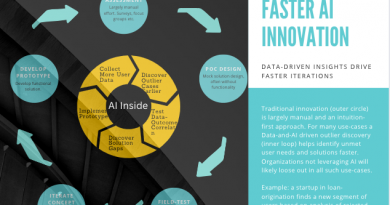Value Creation: How to Measure
Deepam Mishra | AI-inside Innovation Series

Profit Potential = Value Creation
Any new product or profit potential is as business worthy as its profit potential. Innovative products pricing is almost always value-driven, not based on cost (hopefully it is much higher than cost, though!). I am sure you’d have heard all this before. However what no one probably told you is what does value mean? Many people (unfortunately) think of it as art — you can understand and like it but cannot quantify it. However it is just not true. Here is how (one of my earliest mentors) defined it:

It is simply the ratio of user-perceived benefits, divided by user-experienced-friction in using the product/service. As a simple example to understand, consider the innovation in Point-of-Sales brought about by Square vs. conventional systems.
The benefits seen from using a Square POS for the merchant (user) is their feeling of empowerment, ability to process faster transactions (more revenue), digital transformation via a cloud-store, modular add-on software features, many more payment options, and deep data-driven insights. All these coming with reduced friction of setup time, free software, flexible hardware options, less time spent in training clerks and less mistakes and error. Evolutionary improvements only change the numerator or the denominator — slightly, hence only creating incremental customer value.
Industry changing innovations impact both the numerator and the denominator of the customer value equation, making an order of magnitude impact.
I believe that the AI-era of innovation has made the Value Equation even more powerful. Now, clever businesses can actually model and measure the value increases, numerically, but recruiting data-driven insights. In the Square example above, businesses can employ the data to estimate how many customers develop loyalty via a faster checkout and payment options, how fast can merchants respond to market trends using Cloud-store and Data-analytics and how much more revenue they can generate by faster checkouts. Similarly, they can also measure time saved per checkout (both clerk and customer), reduced number of mistakes, cost savings via competitive payment options etc. All of these can be determined by simple, pre-built AI models and algorithms. It is just there for the asking.



